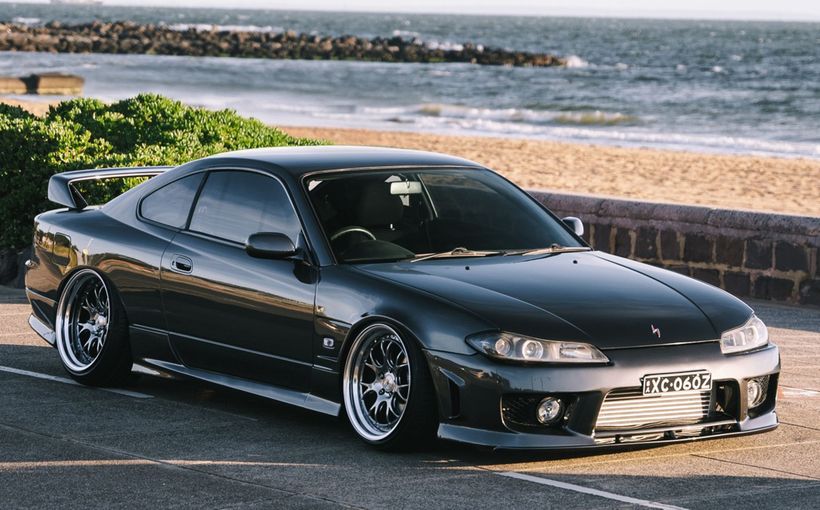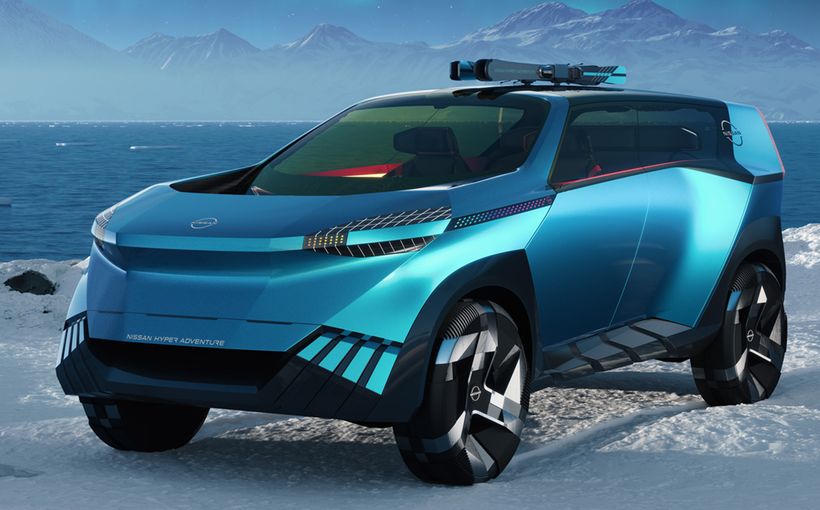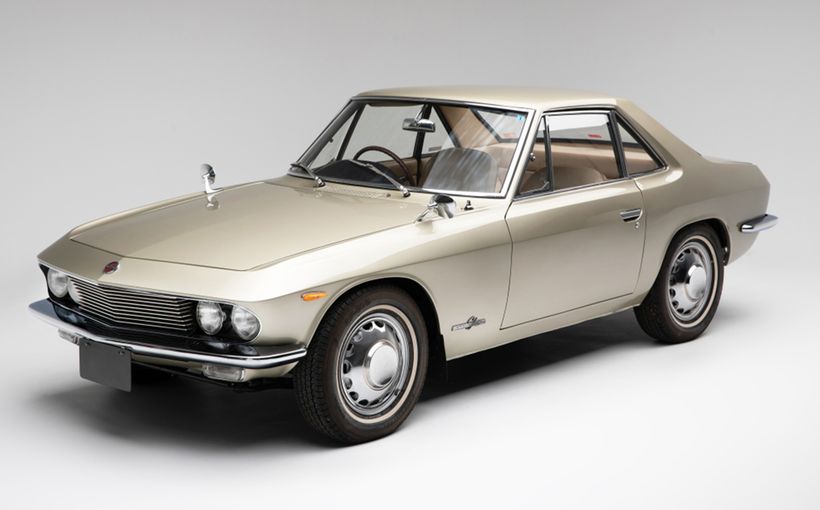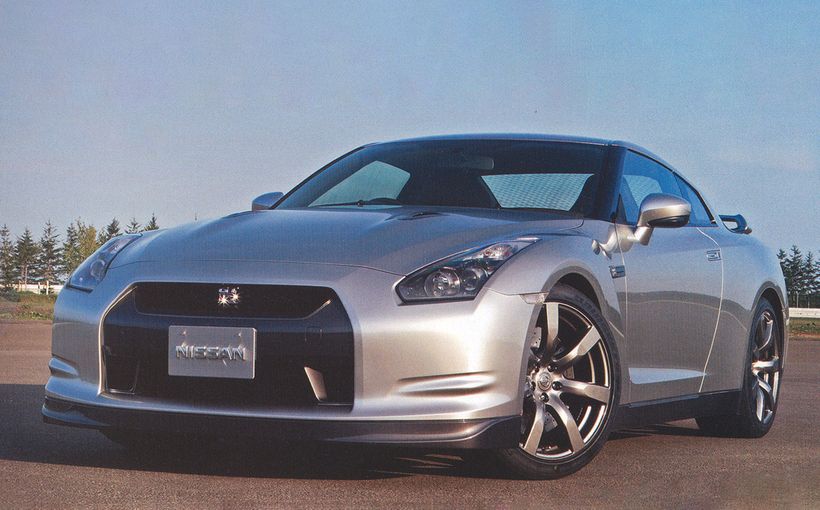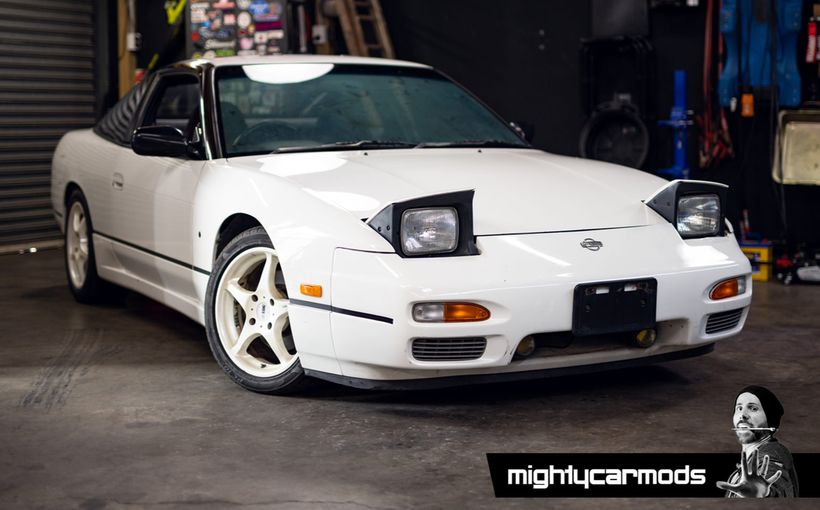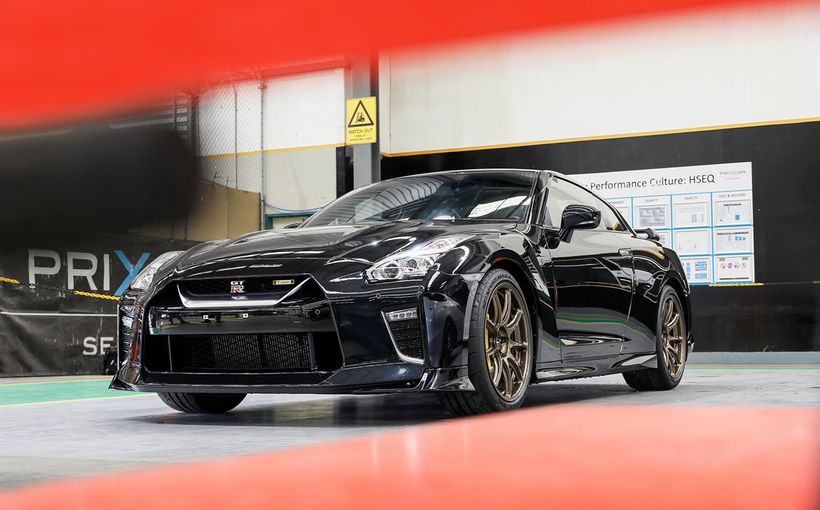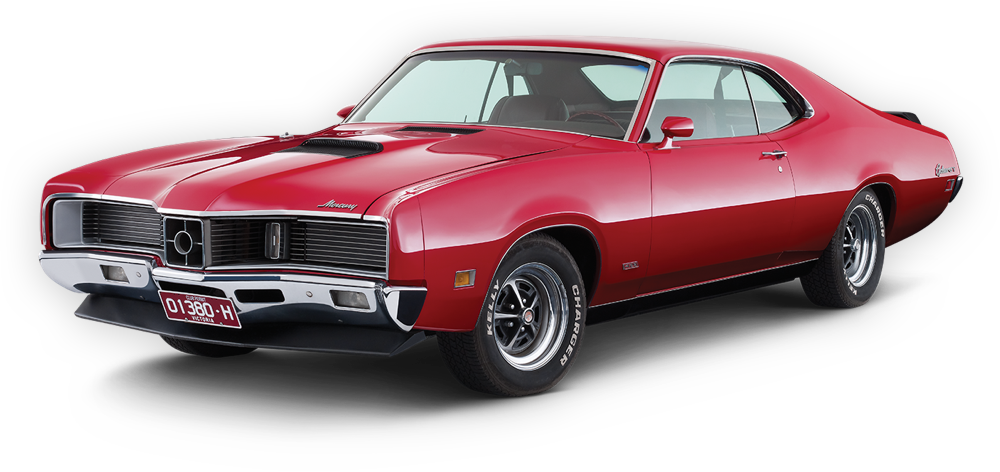Nissan Pulsar EXA: The Group C Bluebird’s Sinister Offspring

Nissan Australia was a lone pioneer in the development of turbocharged Group C touring cars in the early 1980s, with its fast but fragile four cylinder Bluebird sedans taking on much larger capacity V8s in the outright class. Perhaps less well known is the little brute Nissan created when it applied the same philosophy to punch well above its weight in the 3.0 litre division with a turbocharged Pulsar EXA.
Few would remember this blindingly fast (on the straights at least) front wheel-drive factory race car as its competition career in the sunset years of Group C was relatively brief, commencing in the latter half of 1983 and making only a few appearances before the demise of the category in 1984.
There’s no doubt its sporadic appearances, which usually resulted in early retirements, have allowed the works Pulsar EXA to be overlooked. However, it was a genuine factory race car unique to this country and in many ways mirrored the company’s approach to its parallel Bluebird touring car program under product planning boss and race team manager Howard Marsden.
Although the high-boost EXA went like a bullet in a straight line, its combination of enormous turbocharged grunt driving the front wheels through a locked diff made it not only fragile but also fearfully difficult to drive. Its primary driver Christine Gibson, aided by Bob Muir and Glenn Seton in the endurance races, did the best they could with the little turbo monster but the end of Group C in 1984 ensured the project’s premature demise.

Howard’s Way
The release of the sporty two door Nissan Pulsar EXA in 1983, with its powerful 77kW (103 bhp) 1.5 litre E15ET turbocharged four cylinder engine, was the catalyst for development of a Group C racing version.
“Howard (Marsden) really wanted female car buyers to connect with the Pulsar brand, so building some excitement around it with a racing program and a female behind the wheel (Fred’s wife Christine) was seen as a good way to go,” former Nissan works driver and race team boss Fred Gibson told Shannons Club.
“The EXA suffered for the same reasons the Bluebirds did though, because right from the start we were trying to squeeze too much performance out of the thing and it suffered because that made it difficult to drive and terribly unreliable.”
The unique 1.5 litre turbo EXA Group C engine was locally developed and equipped with three-stage dry sump lubrication and stronger Cosworth pistons matched with the tough E15ET crankshaft and connecting rods. The intercooled turbocharger was plumbed into large diameter exhaust headers which led to a large dump pipe on the passenger side.

The five-speed gearbox was loaded with a set of tough Holinger race gears inside the standard gearbox casing. A fully locked diff fed power through a pair of custom-made drive-shafts to the front wheels, which like the rears were either 15 x 10-inch or 16 x 10-inch composite racing rims. Braking was via ventilated four-wheel discs clamped by multi-piston calipers along with stiffer suspension equipped with Tokico coil-over shocks and adjustable anti-roll bars.
Inside the roll cage-equipped cockpit the usual Group C safety standards applied while outside the more liberal bodywork freedoms introduced late in the Group C era were most apparent with a huge front spoiler, massive rear wing and enormous wheel arch flares front and rear.
From any angle the works EXA looked ferocious and thanks to some typically persuasive paperwork by Howard Marsden it packed a savage bite. Although the road-going Pulsar EXA was equipped with a moderately sized Garrett T02 turbocharger, Marsden worked some magic with the car’s FIA homologation papers resulting in approval of the much larger T03 unit.
This pivotal change ensured a huge increase in engine power from the road car’s humble 103bhp to outputs reportedly in excess of 300bhp - or about three times the standard output! As you can imagine, there was considerable throttle lag waiting for such a big turbo on such a small engine to spool up to its 1.6 bar (23 psi) maximum boost pressure. And then all hell would break loose when it did, with the car’s locked diff, drive-shafts and front wheels overwhelmed by the task of getting it all onto the bitumen.

“Somehow he (Marsden) got a T03 homologated, so it had unbelievable grunt for a little car,” Gibson recalled. “Don’t forget it only weighed about 800kg (Bluebirds about 1100kg) so it was as light as a feather and with all that power it was just a rocket in a straight line.
“I remember when Christine first raced the car at Sandown (1983) and going up the back straight, even with that big wing on the back of it, there was no way I could pass it in the Bluebird. It was the same on Conrod Straight at Bathurst. It was so small and light with so much grunt you just couldn’t get near it.
‘“The main problem was the huge amount of torque steer it had, because of all the power it had. I only drove it once and I couldn’t believe how much it torque-steered. Every time you changed gears and got back on the throttle it would just dart all over the road and that was just because it had too much grunt for the front wheels to handle.
“In its original form it had unequal-length drive-shafts like the road car, so one of the biggest improvements we made was to fit equal-length drive-shafts. We also fiddled around with all sorts of limited slip diffs but we found it worked best with a fully locked diff because with the equal-length shafts it was driving both wheels the same. On a big fast circuit like Bathurst it wasn’t too bad because you were going quick, but when you had lots of tighter and slower corners like at Amaroo Park it was a mongrel.
“It started out with 15-inch rims on it but at one stage we tried 16s with a lower profile tyre. That made it worse, though, because with the 15s the higher profile tyre wall had a little bit of give in it whereas the lower profile 16s had less compliance which just magnified the problem.”
As you can imagine, with those fat front tyres, non-power assisted rack and pinion steering and a locked diff it was near impossible to turn the steering wheel at low speeds. Gibson recalled that after returning to pit lane, Christine would step out and one of the mechanics would jump in to drive it around the pit-paddock area.

Racing the EXA
Under the FIA’s engine equivalency rules (cubic capacity x 1.4) the EXA’ s 1.5 litre turbo engine was notionally rated at more than 2.0 litres, putting it into the 3.0 litre class against proven performers like the V6 Ford Capri and Alfa Romeo GTV6.
The EXA made its debut at the 1983 Castrol 400 at Sandown Park in September, which in those days was the traditional warm-up event for the Bathurst 1000 which followed three weeks later. Gibson said that the EXA’s wayward handling was a big discussion point at the driver’s briefing, at which all agreed to give the little car as much room as possible when trying to overtake!
Even so the EXA showed great potential. According to race reports it looked like walking away with the 3.0 litre class win on debut until it expired with a mechanical problem, but its raw speed was beyond question. For the Bathurst 1000 three weeks later, Christine Gibson was joined by experienced co-driver Bob Muir.
“The Pulsar had debuted at Sandown and showed that, with a little reliability, it would completely blitz the rest of this class,” claimed Chevron Publishing’s Bathurst race report. “It may be ugly to look at and a real bitch to drive, but in a straight line there’s just no catching it.
“It didn’t come as much of a shock to anyone when the Pulsar blew them away in practice. It simply was a one-horse race, as proved by Gibson’s 2 min 27.1 sec best (more than three seconds quicker than the fastest Capri).

“This put the car on the 37th place on the grid in front of a lot of big movers with big engines. But even though the times told a bad story, the rest of the three-litre drivers didn’t look concerned. The Pulsar was quick but it was ever so fragile. Practice accounted for two turbo units and with 163 hard laps to go on race day, the reliable old Capris still looked real good.
“From the start it was Gibson’s Pulsar that simply blasted away from the rest of the little battlers. (It) was looking uncatchable but, quite suddenly, the Seton Capri started making up ground and the Pulsar’s lap times fell to bits. Just 14 laps later Gibson/Muir’s race ended behind the pits with a broken gear selector.”
It was a similar story at the next Australian Endurance Championship round at Surfers Paradise in late October, with the EXA well suited to the fast flowing nature of the Queensland circuit. Mrs Gibson again set a cracking pace in qualifying to leave her 3.0 litre class competitors way behind and for the first 40 of the race’s 95 laps (300km) was running away with the class lead until the car slowed dramatically and retired with engine problems.
Clearly, with so much speed to burn, the Pulsar EXA had huge potential if the car’s reliability could have been improved. However, with the Group C touring car rules coming to an end in 1984, that potential would never be realised as there was little point in persisting with development of a car built to a unique set of regulations that were soon to be shelved.
Christine Gibson and the EXA continued to make limited appearances in the final year of Group C, including several rounds of the AMSCAR touring series at Amaroo Park. They also made a final start in the Bathurst 1000 that year, this time with Nissan’s future Group A star Glenn Seton as co-driver. Again the little car qualified well up the grid in 26th place ahead of many larger cars (there was no 3.0 litre class that year) and completed 76 of the 163 laps before retiring again, this time with driveshaft failure.

“Basically it had way too much power and grip for what it was and it just destroyed itself all the time,” Fred Gibson concluded when quizzed on the Group C EXA’s fragility.
“We made the same mistake with that car as we did with the Bluebird. If we’d been happy enough for the Bluebird to just keep winning the 3.0 litre class at every race rather than chasing outright wins it would have gone a lot better, because by homologating bigger turbos with bigger boost and all that they kept blowing up all the time.
“It was the same with EXA really. We should have just put up with the thing using the smaller turbo and lower boost because it still would have been a quick little car (in the 3.0 litre class) that was much easier to drive and a lot more reliable.”

Pulsar ET Turbo
Although Nissan’s Group C program with the Pulsar EXA did not produce winning results on the track, the little turbocharged two-door still proved popular enough with performance enthusiasts on the road for Nissan Australia to locally develop a more practical derivative based on the five-door Pulsar hatchback in 1984.
This was another of Howard Marsden’s pet projects, using the EXA’s brilliant E15ET engine (hence the ET name) combined with other engineering treats including four wheel disc brakes (the EXA had rear drums), uprated suspension, alloy wheels and high quality interior trim.
Although this unique Aussie ‘hot hatch’ was a great performance package, it had no future as a successor to the EXA on the race track. With Australia’s switch to international Group A rules in 1985, Nissan was already heavily committed with its DR30 Skyline which was due to debut in 1986.
Even so, the car maker found a new and very entertaining way to promote Pulsar on the race track in 1985 with the Nissan Turbo Super Challenge. It was a concept aimed primarily to entertain but also showcase the rich sporting qualities of the ET Turbo in competition use.

“The dozen drivers invited to participate in the seven-round (14 race) Nissan pointscore were largely of the stellar variety with one or two wild cards. All the logical names were there; Jim Richards, Dick Johnson, Colin Bond, George Fury, Allan Grice, John Bowe…” wrote Peter McKay in the Australian Motor Racing Yearbook.
“The prizemoney was mind-blowing, starting with $25,000 plus a new Skyline (about 23 grand) for the series winner. The big bucks continued back to fifth. Qualifying was literally a lottery. It consisted of pulling a numbered marble from a hat, a simple task which covered the twin jobs of allocating cars and starting positions. And for the second heat, drivers would be subjected to an inverted grid. All very fair, really.
“Nissan prepared and provided the race cars, close-to-stock versions of the zappy little Australianised Pulsar ET Turbo, modified only to satisfy safety requirements. Engines, suspensions and brakes were as they left the factory, the idea being to provide a realistic test of a kosher road-going car. Even the radial street tyres – Bridgestones early in the series; Goodyears later – were unbuffed.”

Unfortunately for Nissan, the combination of some big egos and generous prizemoney saw plenty of desperate driving and mounting damage bills, with many of the races looking more like demolition derbies. Despite the company’s new motor sport boss Fred Gibson reading the riot act to the drivers on several occasions, they seemed to ignore such pleas after their helmets were strapped on!
Media reports started to focus more on the wild driving and damage bills than the race results, with one newspaper story claiming that the rough-house Adelaide and Amaroo rounds alone had cost Nissan Australia $50,000 in repairs. Even so, after seven rounds and 14 action-packed races, JPS BMW’s newly crowned Australian Touring Car Champion Jim Richards emerged as the winner with Grice and Fury tied in second place.
“Despite the litany of crashing and bashing and the horrendous damages bill, the Nissan Turbo Super Challenge had been a rampaging promotional triumph,” McKay (who also competed in the series) concluded in his AMRY report.
“And Richards had demonstrated his marvellous skills yet again, without resorting to unfair tactics. Very few others - Fury, Portman, Rogers included – could legitimately claim angel status throughout the contest.”

And the Australian-developed Nissan Pulsar ET Turbo also proved what a tough and resilient performance car it really was in stock standard trim, displaying outstanding durability when subjected to such brutal treatment.
On reflection, though, it’s a shame Nissan ran out of time to explore the true potential of its Pulsar EXA in top level touring car racing. With such a tantalising combination of size, weight and power harnessed by rapid advances in technology, it could well have become the giant killer Nissan always wanted it to be. Sadly we’ll never know.



